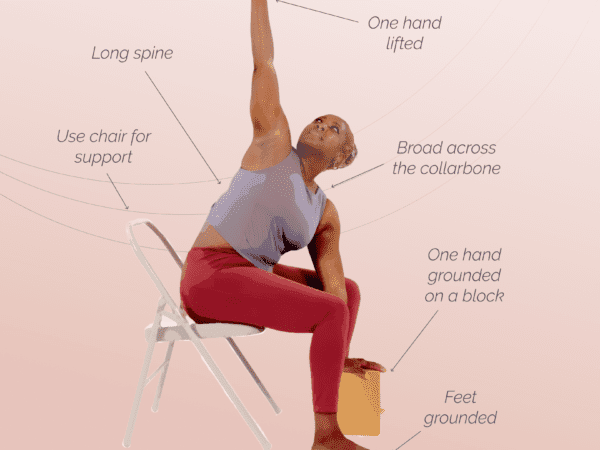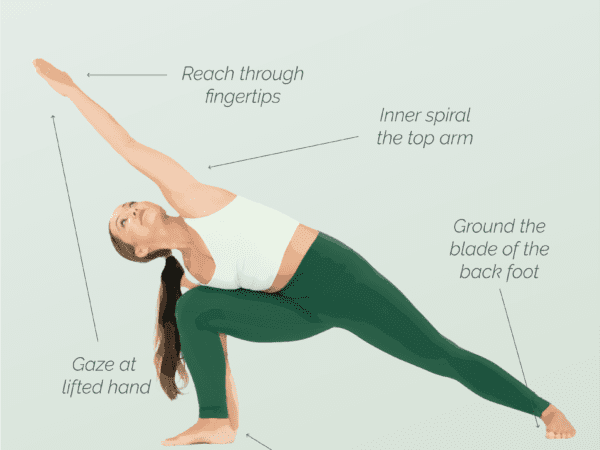Revolved downward dog is a powerful yoga pose that offers numerous benefits to the body and mind. Also known as Parivrtta Adho Mukha Svanasana in Sanskrit, this pose is a variation of the popular downward dog but with a twist to make the pose deeper. Revolved downward dog stretches and strengthens the entire body, promoting deep relaxation and inner peace. If you’re a beginner yoga student and want to include this pose in your practice, keep reading for a step-by-step guide and tips on doing a revolved downward dog safely and effectively.
What are the benefits of revolved downward dog?
Adding revolved downward dog to your favorite yoga sequences offers a wide range of benefits for the body and mind, including:
1. Spinal flexibility: This pose helps to release tension in the spine and improve its flexibility, which can help alleviate back pain and improve posture.
2. Digestive health: The twisting motion of Revolved Downward Dog helps to stimulate the digestive system, promoting healthy digestion and reducing bloating and constipation.
3. Strengthening: This pose targets and strengthens the arms, shoulders, back, and core muscles, helping to improve overall body strength and stability.
4. Mental clarity: As with many yoga poses, Revolved Downward Dog can help to calm the mind and reduce stress and anxiety, promoting a sense of peace and mental clarity.
What are the contraindications for revolved downward dog?
While revolved downward dog is a safe and beneficial pose for most people, there are a few contraindications to keep in mind. Avoid this pose if you have:
1. A wrist injury: If you have a wrist injury, it may be uncomfortable or painful to bear weight on your hands in this pose. Modify the pose by doing it on your forearms or using a prop like a block under your hands.
2. High blood pressure: Twist poses can increase blood pressure temporarily, so if you have high blood pressure, speak to your healthcare provider before trying this pose.
3. Pregnancy: If you’re pregnant, revolved downward dog may not be suitable for you. Talk to your prenatal healthcare provider and a qualified yoga teacher before attempting this pose.
How to do revolved downward dog
Start on your hands and knees in tabletop position. Your hands are under your shoulders, and your knees are under your hips.
Tuck your toes and lift your hips into the air into downward facing dog position. Your hips are back and up, lengthening through your spine. Your arms are straight, so your body is forming an upside-down V shape. Your heels are on the ground, and your legs are straight.
Reach your right hand to grab your left ankle and gaze under your left armpit.
Hold the pose for five breaths and release and repeat on the opposite side.
How can I make revolved downward dog easier?
Revolved downward dog is a yoga pose that offers a variety of benefits, including improved spine mobility, core strength, and flexibility. However, it can be challenging for beginner yoga students to master. Fortunately, there are ways to modify the pose to make it easier or more challenging, depending on your level of experience and comfort.
If you’re finding revolved downward dog difficult, you can try the following modifications to make it easier:
Bend your knees: If your hamstrings are tight, bending your knees can help you get into the pose more comfortably.
Shorten your stance: Move your feet closer together to make the pose less challenging for your balance.
With practice and patience, revolved downward dog can become a powerful and empowering pose that adds a lot to your yoga practice. So why not give it a try and see how it can benefit your body and mind?
Are you looking for more guidance on your yoga journey? Sign up for Omstars to get access to thousands of yoga classes in the comfort of your own home. Click here to start your subscription.









